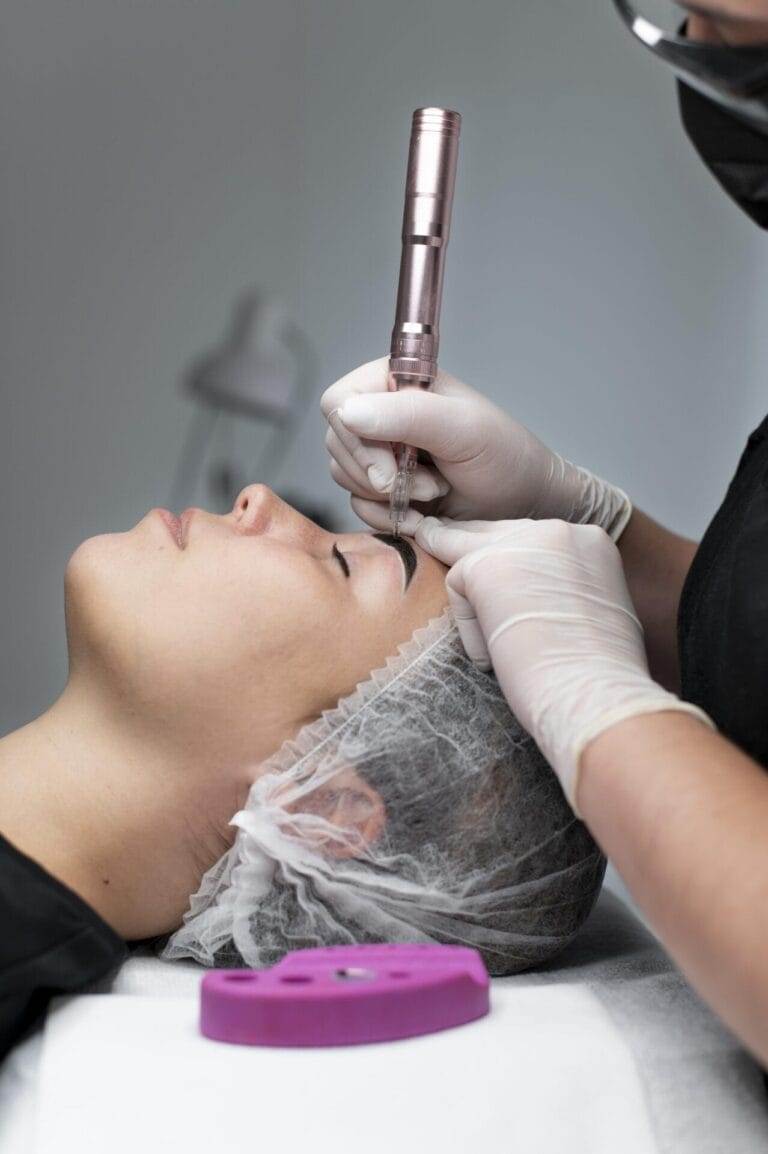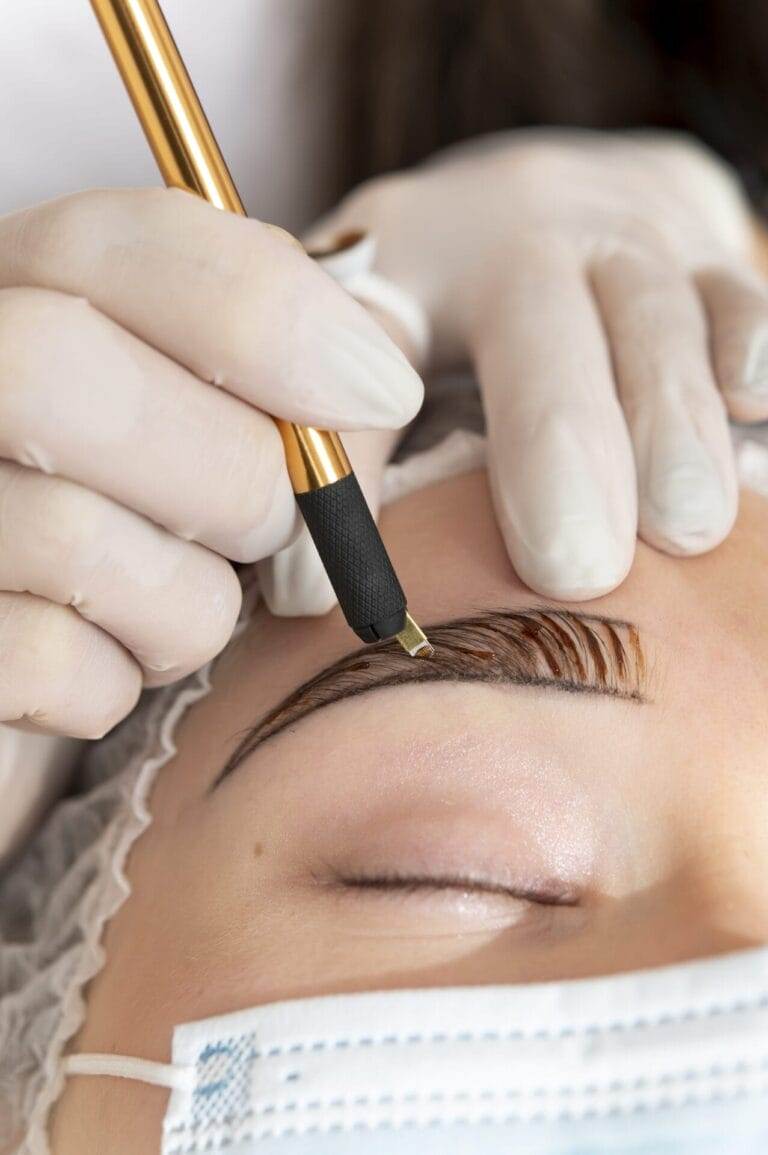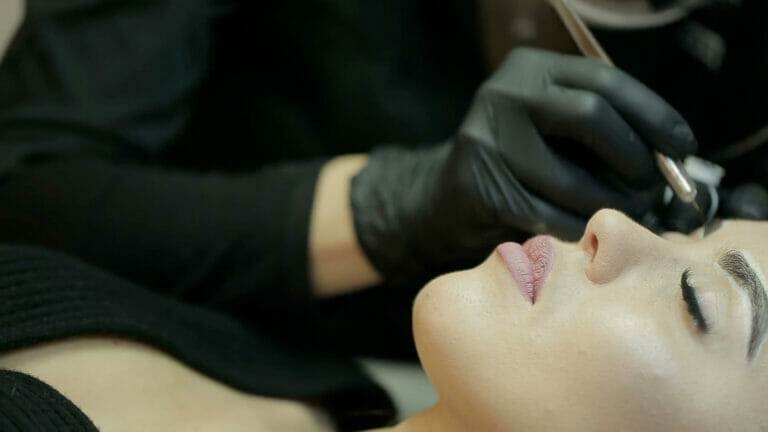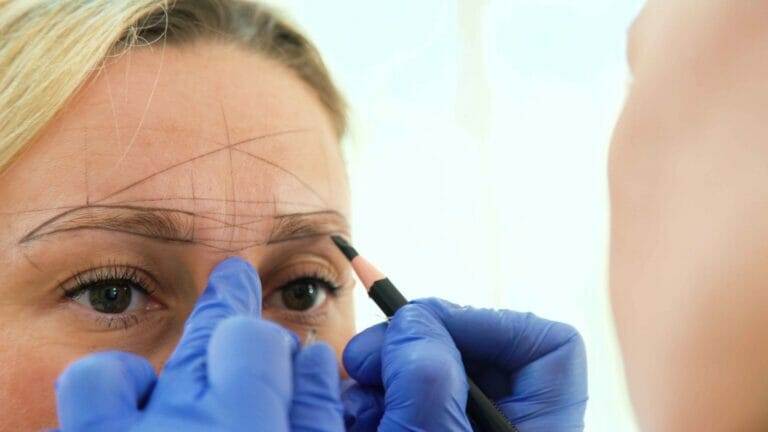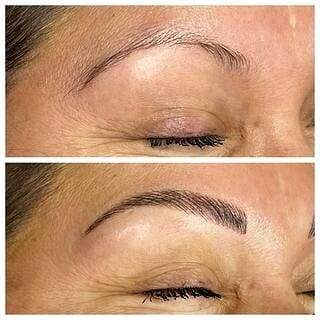Microblading has become increasingly popular in recent years as a way to achieve perfectly shaped and defined eyebrows. This semi-permanent makeup technique involves using a small handheld tool to create hair-like strokes on the skin, giving the appearance of fuller and more natural-looking brows. While microblading can be a game-changer for those who struggle with sparse or uneven eyebrows, it’s important to understand the process and manage any potential pain or discomfort that may arise.
Understanding the Microblading Process
Microblading is a meticulous process that requires precision and skill. It involves using a small blade made up of tiny needles to deposit pigment into the superficial layers of the skin. The technician carefully creates individual strokes that mimic the natural direction and shape of eyebrow hairs. This technique allows for a more realistic and natural-looking result compared to traditional eyebrow tattooing.
Choosing a qualified and experienced technician is crucial when it comes to microblading. A skilled technician will have extensive training and knowledge of facial anatomy, color theory, and proper sanitation practices. They will also be able to assess your unique features and create a brow shape that complements your face. It’s important to do your research and ask for recommendations before selecting a technician to ensure you are in capable hands.
Does Microblading Hurt?
One of the most common concerns people have about microblading is whether or not it will be painful. The level of pain experienced during the procedure can vary from person to person, as everyone has a different pain tolerance. However, most people describe the sensation as mild to moderate discomfort rather than intense pain.
Factors that can affect pain levels include individual sensitivity, menstrual cycle (some women may be more sensitive during their period), and the use of numbing agents. It’s important to communicate with your technician throughout the procedure if you are experiencing any discomfort so they can make adjustments as needed.
Preparing for Your Microblading Appointment
To ensure the best possible outcome and minimize any potential pain or discomfort, there are a few steps you can take to prepare for your microblading appointment. It’s important to avoid any blood-thinning medications or supplements for at least a week before your appointment, as these can increase the risk of bleeding and bruising during the procedure.
It’s also recommended to avoid alcohol and caffeine for 24 hours before your appointment, as these can contribute to increased sensitivity. Additionally, it’s important to properly cleanse your skin and avoid any exfoliating or harsh skincare products in the days leading up to your appointment. This will help create a clean and optimal canvas for the microblading process.
Numbing Options for Microblading
To help manage any potential pain or discomfort during the microblading procedure, there are various numbing options available. These include topical numbing creams, gels, and sprays that can be applied to the skin prior to the procedure.
Topical numbing creams are typically the most common option and are applied about 30 minutes before the procedure. They work by temporarily numbing the nerve endings in the skin, reducing the sensation of pain. However, it’s important to note that while numbing creams can help minimize discomfort, they may not completely eliminate all sensations.
What to Expect During the Microblading Procedure

During the microblading procedure, your technician will begin by mapping out your desired brow shape using a pencil or marker. This will serve as a guide for creating the hair-like strokes. Once the shape is agreed upon, a topical numbing cream may be applied to help minimize any potential discomfort.
The technician will then use a small handheld tool with tiny needles to create the individual strokes. The pigment is deposited into the superficial layers of the skin, creating a natural-looking brow. The process can take anywhere from one to two hours, depending on the desired outcome and the technician’s speed and precision.
While some people may experience mild discomfort during the procedure, it is generally well-tolerated. The sensation is often described as a scratching or scraping feeling, similar to that of a cat scratch. However, the numbing cream and the technician’s technique should help minimize any discomfort.
Managing Discomfort During Microblading
If you find yourself experiencing discomfort during the microblading procedure, there are several techniques you can use to help manage the pain. Deep breathing exercises can be helpful in promoting relaxation and reducing anxiety. Taking slow, deep breaths in through your nose and out through your mouth can help calm your nervous system and distract from any discomfort.
Distractions such as listening to music or podcasts, watching a movie or TV show, or engaging in conversation with your technician can also help take your mind off any discomfort. Some technicians even offer stress balls or other items to squeeze during the procedure, which can provide a sense of relief and distraction.
Aftercare for Microbladed Brows
Aftercare is a crucial part of the microblading process and plays a significant role in the healing and longevity of your new brows. It’s important to follow your technician’s instructions carefully to ensure optimal results.
Immediately after the procedure, you may experience some redness and swelling in the treated area. This is normal and should subside within a few hours. It’s important to avoid touching or picking at your brows during this time to prevent infection or disruption of the healing process.
For the first week following the procedure, it’s important to keep your brows clean and dry. Avoid getting them wet during showers or when washing your face. You should also avoid applying any makeup or skincare products directly on the treated area.
As your brows heal, they may go through various stages of scabbing and flaking. It’s important to resist the urge to pick or scratch at any scabs, as this can lead to scarring or pigment loss. It’s also important to avoid excessive sweating, sun exposure, and swimming during the healing process.
How Long Does Microblading Pain Last?
The duration of pain and discomfort after microblading can vary from person to person. In general, any pain or discomfort experienced during the procedure should subside within a few hours after the treatment. However, it’s not uncommon to experience some tenderness and sensitivity in the treated area for a few days following the procedure.
The healing process can take anywhere from 4 to 6 weeks, during which time your brows will go through various stages of healing and color fading. It’s important to be patient and allow your brows to fully heal before assessing the final result.
Factors that can affect healing time include individual skin type, lifestyle habits, and adherence to aftercare instructions. It’s important to follow your technician’s advice and avoid any activities or products that may interfere with the healing process.
Common Misconceptions About Microblading Pain
There are several common misconceptions about microblading pain that are important to address. One misconception is that microblading is a painful procedure. While some discomfort may be experienced during the process, it is generally well-tolerated and described as mild to moderate discomfort rather than intense pain.
Another misconception is that numbing creams completely eliminate all sensations during microblading. While numbing creams can help minimize discomfort, they may not completely eliminate all sensations. It’s important to have realistic expectations and communicate with your technician throughout the procedure if you are experiencing any discomfort.
Tips for a Comfortable Microblading Experience
To ensure a comfortable and successful microblading experience, there are a few final tips to keep in mind. First and foremost, communication with your technician is key. Be sure to express any concerns or questions you may have before, during, and after the procedure. Your technician is there to guide you and ensure your comfort throughout the process.
It’s also important to trust the process and be patient with the healing and fading stages. Your brows may appear darker and more intense immediately after the procedure, but they will gradually fade to a more natural-looking color within a few weeks.
Lastly, it’s important to approach microblading with confidence and knowledge. Understanding the process, managing any potential pain or discomfort, and following aftercare instructions will help ensure the best possible outcome for your new brows.
Microblading is a popular and effective way to achieve beautifully shaped and defined eyebrows. While there may be some discomfort during the procedure, it is generally well-tolerated and manageable. By understanding the process, preparing properly, and following aftercare instructions, you can have a comfortable and successful microblading experience. Trust in your technician’s expertise and communicate openly throughout the process to ensure optimal results. With the right knowledge and approach, microblading can be a game-changer for your brows.
If you’re interested in exploring other ways to enhance your appearance, you might want to check out this article on exotic facial piercings at Embellish PB in San Diego. It’s always fascinating to see how people express themselves through unique and creative body modifications. From eyebrow tattooing and microblading to tattoo removal, Embellish PB offers a range of services that can help you achieve the look you desire. So, if you’re curious about the growing popularity of piercings and its positive impact on self-expression, be sure to read this insightful article. (source)


